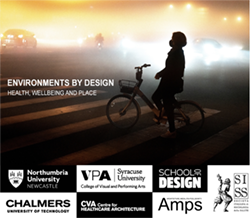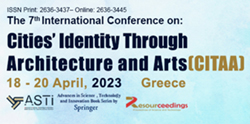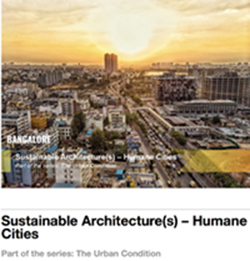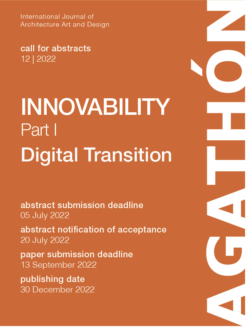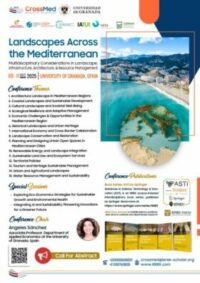ISSN (print): 2532-5507
ISSN (online): 2531-9477
Call of the Journal:
Sep
2020
Nov
2020
Dec
2020
“The effective design of public services is itself an essential public service”. This was the incisive statement which concluded the Decalogue of prescriptions which emerged at the end of the first Federal Design Assembly, in 1973, when Ivan Chermayeff, Richard Saul Wurman, Ralph Caplan and Peter Bradford met under the aegis of the Federal Council of the Arts and the Humanities to coordinate the US federal agency services design programme. The Design Necessity was the title of the meeting, an occasion during which the necessity of design – under the umbrella of the Anglo-Saxon all-round meaning of “design” – was asserted in the context of public design at any scale and level of complexity (and with this, the need for the presence of designers within the design processes themselves was affirmed). As a final conclusion it was agreed that the first and most important service of all for the community is precisely design itself, based on the principles – we could say ahead of time – of citizen design and of shared design, focusing on the profound analysis of citizens’ needs and the search for an answer. Issue 10 of MD Journal aims to analyse the context and boundaries of design, where the visual component of identity and the design of public services come together, encouraging research and reflection – both theoretical as well as experimental – on the part of researchers in the discipline of Italian and international design. The aim of the investigation is to explore the potential for updating and refreshing the objectives of “public service” communication, in the design of systems and services through which institutions, bodies, organisations, of public interest, reach people and citizens. The concept of “public service” has constituted a founding phenomenon as part of the design culture of Italian communication, where Italian design has been both a pioneer and a guide. From the onset and throughout its development, it has been said to have experienced “highs” and “lows”, moments of second thoughts or updates, transferring tools and methodologies interchangeably between the public and private sectors, common and shared spaces, physical and virtual places of interaction.
In recent years, as on-line services have become increasingly digitised, institutional communication has undergone radical changes and it is believed that the public service communication policy today deserves a review, an analysis of the “state of health” and a verification of the design potential of the design discipline. Today, enabling technologies and digital innovation introduced both in the private and public spheres of the person are calling into question the complex relationship between citizens and institutions, opening up new scenarios in which visual communication and the entire graphic design framework become new tools for social innovation. However, technology is not neutral by nature, and while on the one hand it is a question of reasserting the “necessity of design” in every project aimed at inclusion, on the other it is essential to be aware of the new and broader social responsibility that designers have to bear. The same concept of visual identity – that is to say the designed form of visible, artificial manifestations of identity – is now characterised and fuelled by methodologies and operational tools that can focus on the users, leading the design of institutional identities back within the boundaries of public interest. While several theoretical contributions have now been written on the historical and critical aspects of public service graphics, the focus of the MD Journal 10 call lies on the set of design practices that the change of relations between the actors involved – institutions, bodies, organisations and citizens – is slowly introducing into this broad area of design.
The communicative representation and transmission of the Public Body, the Institution, the Organisation with purposes other than merely making a profit, carried out with appropriate instruments, methods and arguments other than those for the propaganda of goods and assets, becomes an instrument in order to transmit to the users of services – municipal, regional, state-run, international, global – information that implies a renewed, different and motivated organisational “culture” at the service of institutions. MD Journal #10 intends to explore the contribution that design can make to this area of interest, by focusing on the theoretical and design aspects, sharing among researchers the transformations under way (or only latent), the methods and instruments that the discipline is implementing, in relation to certain core themes: design for citizenship and inclusion; public-service digitisation projects, practices and services; citizen centered methodologies and co-design of services; public sharing and co-design platforms and spaces; emergency design; the know-how necessary for the design discipline in order to tackle the digitisation of institutional identities; design of identities in the context of culture and training; design of territorial identities as an expression of social interaction; design of identities and awareness-raising projects in the non-profit context; wayfinding of public service.
Design for citizenship
“The effective design of public services is itself an essential public service”. This was the incisive statement which concluded the Decalogue of prescriptions which emerged at the end of the first Federal Design Assembly, in 1973, when Ivan Chermayeff, Richard Saul Wurman, Ralph Caplan and Peter Bradford met under the aegis of the Federal Council of the Arts and the Humanities to coordinate the US federal agency services design programme. The Design Necessity was the title of the meeting, an occasion during which the necessity of design – under the umbrella of the Anglo-Saxon all-round meaning of “design” – was asserted in the context of public design at any scale and level of complexity (and with this, the need for the presence of designers within the design processes themselves was affirmed). As a final conclusion it was agreed that the first and most important service of all for the community is precisely design itself, based on the principles – we could say ahead of time – of citizen design and of shared design, focusing on the profound analysis of citizens’ needs and the search for an answer. Issue 10 of MD Journal aims to analyse the context and boundaries of design, where the visual component of identity and the design of public services come together, encouraging research and reflection – both theoretical as well as experimental – on the part of researchers in the discipline of Italian and international design. The aim of the investigation is to explore the potential for updating and refreshing the objectives of “public service” communication, in the design of systems and services through which institutions, bodies, organisations, of public interest, reach people and citizens. The concept of “public service” has constituted a founding phenomenon as part of the design culture of Italian communication, where Italian design has been both a pioneer and a guide. From the onset and throughout its development, it has been said to have experienced “highs” and “lows”, moments of second thoughts or updates, transferring tools and methodologies interchangeably between the public and private sectors, common and shared spaces, physical and virtual places of interaction.
In recent years, as on-line services have become increasingly digitised, institutional communication has undergone radical changes and it is believed that the public service communication policy today deserves a review, an analysis of the “state of health” and a verification of the design potential of the design discipline. Today, enabling technologies and digital innovation introduced both in the private and public spheres of the person are calling into question the complex relationship between citizens and institutions, opening up new scenarios in which visual communication and the entire graphic design framework become new tools for social innovation. However, technology is not neutral by nature, and while on the one hand it is a question of reasserting the “necessity of design” in every project aimed at inclusion, on the other it is essential to be aware of the new and broader social responsibility that designers have to bear. The same concept of visual identity – that is to say the designed form of visible, artificial manifestations of identity – is now characterised and fuelled by methodologies and operational tools that can focus on the users, leading the design of institutional identities back within the boundaries of public interest. While several theoretical contributions have now been written on the historical and critical aspects of public service graphics, the focus of the MD Journal 10 call lies on the set of design practices that the change of relations between the actors involved – institutions, bodies, organisations and citizens – is slowly introducing into this broad area of design.
The communicative representation and transmission of the Public Body, the Institution, the Organisation with purposes other than merely making a profit, carried out with appropriate instruments, methods and arguments other than those for the propaganda of goods and assets, becomes an instrument in order to transmit to the users of services – municipal, regional, state-run, international, global – information that implies a renewed, different and motivated organisational “culture” at the service of institutions. MD Journal #10 intends to explore the contribution that design can make to this area of interest, by focusing on the theoretical and design aspects, sharing among researchers the transformations under way (or only latent), the methods and instruments that the discipline is implementing, in relation to certain core themes: design for citizenship and inclusion; public-service digitisation projects, practices and services; citizen centered methodologies and co-design of services; public sharing and co-design platforms and spaces; emergency design; the know-how necessary for the design discipline in order to tackle the digitisation of institutional identities; design of identities in the context of culture and training; design of territorial identities as an expression of social interaction; design of identities and awareness-raising projects in the non-profit context; wayfinding of public service.
ANVUR.
There is no fee of any kind charged for publishing.
Editors
Veronica Dal Buono
Gianni Sinni
Michele Zannoni

